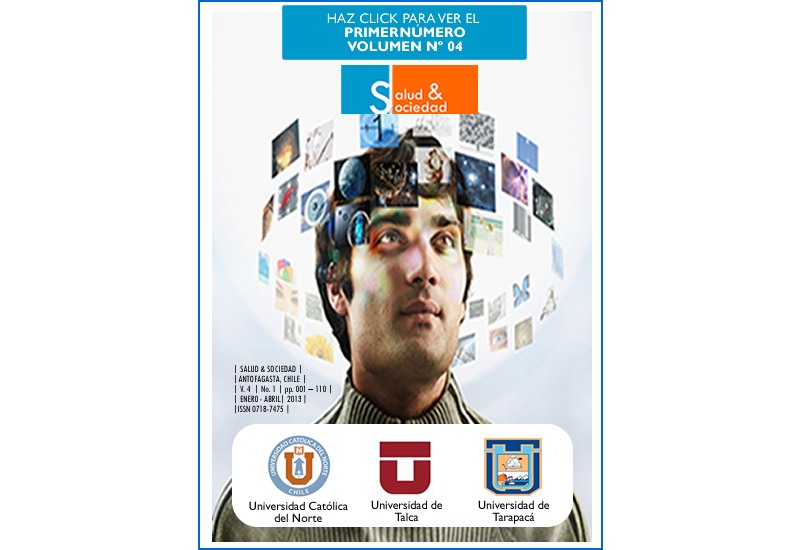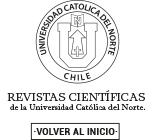Auto-aceptación como factor de riesgo para el intento de suicidio en adolescentes.
DOI:
https://doi.org/10.22199/S07187475.2013.0001.00002Palabras clave:
Auto-aceptación, intento de suicidio, adolescentes, factores de riesgo y protección, Self-acceptance, attempted suicide, adolescents, risk and protective factors,Resumen
El propósito fue evaluar si la auto-aceptación es un factor de riesgo del intento de suicidio en adolescentes. Participaron 665 estudiantes de 14 a 20 años (M = 16.7; DE= 1.36); 79 jóvenes (12%) reportaron intento de suicido, 24 fueron varones (M= 16.6 años; DE= 1.21) y 55 mujeres (M= 16.7 años; DE= 1.44). Se trabajó con dos muestras equivalentes, una con jóvenes que reportaron intento suicida (n= 79) y otra sin intento de suicidio (n= 69). Instrumentos: Escala de Auto-aceptación, con cinco dimensiones (rechazo-personal, insatisfacción personal, rechazo-carácter, auto-aceptación de aspectos positivos y auto-aceptación de aspectos negativos) y cinco preguntas sobre intento de suicidio. Los resultados mostraron que los predictores de auto-aceptación para el intento suicida fueron diferentes dependiendo del sexo de los adolescentes, la regresión logística sugiere que en los hombres la aceptación de sus aspectos negativos es un factor protector, pero en el caso de las mujeres, las que reportaron rechazo a su persona tienen un mayor riesgo de repetir el intento suicida.
The purpose of this study was to evaluate self-acceptance in adolescents as a risk factor in attempted suicide. From one sample of 665 students between 14 and 20 years old (M = 16.7; SD = 1.36), only 79 adolescents (12%) reported attempted suicide, of whom 24 were men (M = 16.6) and 55 women (M = 16.7; SD = 1.44). The study included two sample groups, one a group of young people who had reported suicide attempts (n = 79), the other group was composed of people who had not reported suicide attempts (n = 69). A self-acceptance questionnaire which evaluated five dimensions (personal rejection, personal dissatisfaction, character dissatisfaction, self-acceptance of positive aspects and self-acceptance of negative aspects) was administered, and subjects were asked five questions about suicide attempts. The results showed that self-acceptance predictors of suicide attempts were different between the sexes: logistic regression suggests that self- acceptance of negative aspects is a protective factor for men; women who reported personal-rejection have an increased risk of repeating suicide attempts.
Descargas
Referencias
Andrade. P., Betancourt, D. y Camacho, M. (2003). Ambiente familiar de adolescentes que han intentado suicidarse. Revista de Psicología Social y Personalidad, XIX, 1, 55-64.
Borges, G., Orozco, R., Benjet, C. y MedinaMora, M.E. (2010). Suicidio y conductas suicidas en México: retrospectiva y situación actual. Salud Pública de México, 52, 4, 292-304.
Brausch, A., & Gutierrez, P. (2010). Differences in non-suicidal self-injury and suicide attempts in adolescents. Journal of Youth Adolescence, 39, 233-242. doi: 10.1007/s10964-009-9482-0.
Brausch, A., & Muehlenkamp, J. (2007). Body image and suicidal ideation in adolescents. Body Image, 4,207-212. doi: 10.1016/j.bodyim.2007.02.001.
Carson, S., & Langer, E. (2006). Mindfulness and self-acceptance. Journal of Rational- Emotive & Cognitive-Behavior Therapy, 24, 1, 29-43.
Chamberlain, J., & Haaga, D. (2001). Unconditional self-acceptance and psychological health. Journal of Rational-Emotive & Cognitive-Behavior Therapy, 19, 3, 163-176.
Christiansen, E., & Frank, B. (2007) Risk of repetition of suicide attempt, suicide or all deaths after an episode of attempted suicide; a register-based survival analysis. Australian and New Zealand Journal of Psychiatry, 41, 257-265.
Cox, B., Enns, M., & Clara, I. (2004). Psychological dimensions associated with suicidal ideation and attempts in the national comorbidity survey. Suicide and Life-Threatening Behavior, 34, 3, 209-319.
Cubillas, M., Román, R., Valdez, E. y Galaviz, A. (2012). Depresión y comportamiento suicida en estudiantes de educación media superior en Sonora. Salud Mental, 35, 1, 45-50.
Dave, D. & Rashad, I. (2009). Overweight status, self-perception, and suicidal behavior among adolescents. Social Science & Medicine, 68, 1685-1691. doi: 10.1016/jsocsimed.2009.02.015
Davies, M. (2006). Irrational Beliefs and Unconditional self-acceptance. I. Correlational evidence linking two key features of REBT. Journal of RationalEmotive and Cognitive-Behavior Therapy, 24,113-124.
Davies, M. (2008). Irrational beliefs and unconditional self-acceptance. II. Experimental evidence for causal link between two key features of REBT. Journal of Rational-Emotive & Cognitive-Behavior Therapy. 26, 2, 89-101.
Dori, G., & Overholser, J. (1999). Depression, hopeless, and self-esteem: accounting for suicidality in adolescents psychiatric inpatients. Suicide and LifeThreatening Behavior, 29, 4, 309-318.
Ellis, A. (1996). Una terapia breve más profunda y duradera. Enfoque teórico de la terapia racional emotivoconductual. España: Paidós.
Flett, G., Besser, A., & Hewitt, P. (2003). Dimensions of perfectionism, unconditional self-acceptance and depression. Journal of RationalEmotive & Cognitive-Behavior Therapy, 21, 2, 119-138.
González-Forteza, C., Mariño, M.C, Rojas, E. Mondragón, L. y Medina-Mora, M.E. (1998). Intento de suicidio en estudiantes de la Ciudad de Pachuca, Hidalgo y su relación con el malestar depresivo y el uso de sustancias.
Revista Mexicana de Psicología, 15, 2, 165-175. González-Forteza, C., Ramos, L., Caballero, M. y Wagner, F. (2003) Correlatos psicosociales de depresión, ideación e intento suicida en adolescentes mexicanos Psicothema, 15, 4, 524-532.
González-Forteza, C., Villatoro, J., Alcántar, I., Medina–Mora M.E., Fleiz C., Bermúdez P. & Amador, N. (2002). Prevalencia del intento suicida en estudiantes adolescentes de la Ciudad de México: 1997 y 2000. Salud Mental, 25, 6, 1-12.
Groholt, B. & Ekeberg, Ø. (2009). Prognosis after adolescent suicide attempt: Mental health, psychiatric treatment, and suicide attempts in nine-year follow-up study. Suicide & Life Threatening Behavior, 39, 2, 125-136.
Hacker, K., Suglia, S., Fried, L., Rappaport, N., & Cabral, H. (2006). Developmental differences in risk factors for suicide attempts between ninth and eleventh grades. Suicide& Life Threatening Behavior, 36, 2, 154-161.
Hidaka, Y., Operario, D., Takenaka, M., Omori, S., Ichikawa, S., & Shirasaka, T. (2008). Attemped suicide and associated risk factors among youth in urban japan. Soc Psychiatry Psychiatr Epidemiol, 43, 752-757. doi: 10.1007/s00127-008-0352-y
Hvid, M., & Wang, A. (2009). Preventing repetition of attempted suicide-I. Feasibility (acceptability, adherence and effectiveness) of a Baerum-model like aftercare. Nord J Psychiatry, 63, 148-153. Oslo. ISSN 0803-9488. doi:10.1080/08039480802423022
Kim, D. (2009). Body image dissatisfaction as an important contributor to suicidal ideation in Korean adolescents: Gender difference and mediation for parent and peer relationships. Journal of Psychosomatic Research, 66, 197-303. doi: 10.1016/j.psychores.2008.08.005.
Nrugham, L., Herrestad, H., & Mehlum, L. (2010). Suicidality among Norwegian youth: Review of research on risk factors and interventions. Nord Journal of Psychiatry, 64, 5, 317-326. doi: 10.3109/08039481001628364.
Orbach, I., Gilboa-Schechtman, E., Sheffer, A., Meged, S., Har-Even, D., & Stein, D. (2006). Negative bodily self in suicide attempters. Suicide and LifeThreatening Behavior, 36, 2, 136-151.
Orbach, I., Lottem-Peleg, M., & Kedem, P. (1995). Attitudes toward the body in suicidal, depressed, and normal adolescents. Suicide & LifeThreatening Behavior, 25, 2, 211-221.
Palacios, J., Andrade, P. y Betancourt, D. (2006). Diferencias en los estilos parentales y la conducta sexual de riesgo en adolescentes. La Psicología Social en México. XI, 775-781.
Pavez, P., Santander, N. Carranza, J. y Vera-Villarroel, P. (2009). Factores de riesgo familiares asociados a la conducta suicida en adolescentes con trastorno depresivo. Revista Médica de Chile, 137, 2, 226-233. doi:10.4067/S0034-988772009000200006
Rivera, M.E. (2000) Percepción de las relaciones intrafamiliares y su relación con el intento suicida en adolescentes. La psicología social en México, VIII, 555-559.
Rivera, M.E y Andrade, P. (2006). Recursos individuales y familiares que protegen al adolescente del intento suicida. Revista Intercontinental de Psicología y Educación, 8, 2, 23-40.
Ryff, C. (1989a). Beyond Ponce de Leon and life satisfaction: New directions in quest of successful ageing. International Journal of Behavioral Development. 1989, 12, 1, 35-55.
Ryff, C. (1989b). Happiness is everything, or is it? Explorations on the meaning of psychological well-being. Journal of Personality and Social Psychology, 57, 1069-1081.
Ryff, C., & Keyes, C. (1995). The structure of psychological well-being revisited. Journal of Personality and Social Psychology, 69, 719-727.
Waldrop, A., Hanson, R., Resnick, H., Kilpatrick, D., Naugle, A., & Saunders, B. (2007). Risk factors for suicidal behavior among a national sample of adolescents: implications for prevention. Journal of traumatic Stress, 20, 5, 869-879.
Wild, L., Flicher, A., & Lombard, C. (2004). Suicidal ideation and attempts in adolescents: associations with depression and six domains of self esteem. Journal of adolescence, 27,611-624. doi: 10.101/j.adolescence.2004.03.001.
Descargas
Publicado
Número
Sección
Licencia
Los autores continúan como propietarios de sus trabajos, y pueden volver a publicar sus artículos en otro medio sin tener que solicitar autorización, siempre y cuando indiquen que el trabajo fue publicado originariamente en Revista Salud & Sociedad (ISSNe:0718-7475).



_(1).png)





